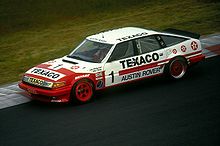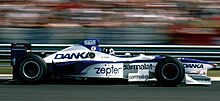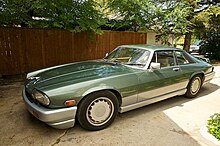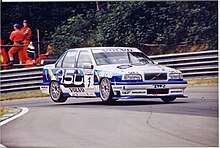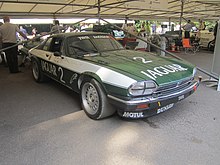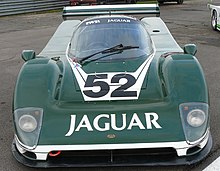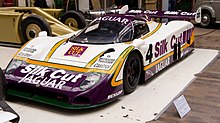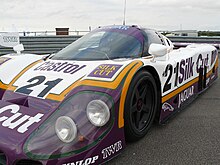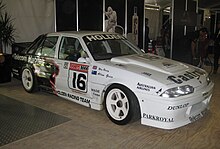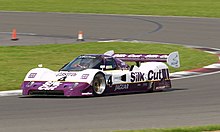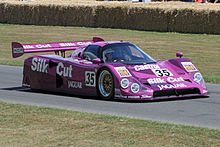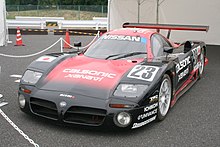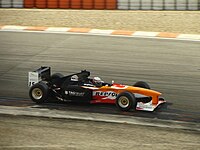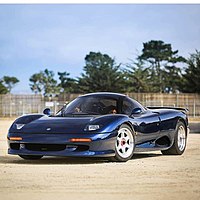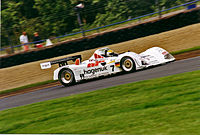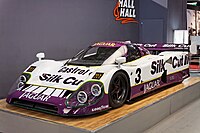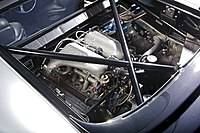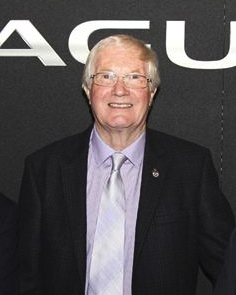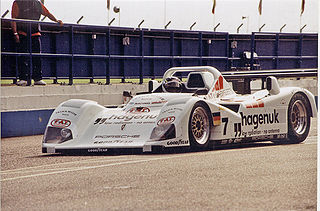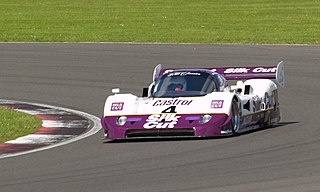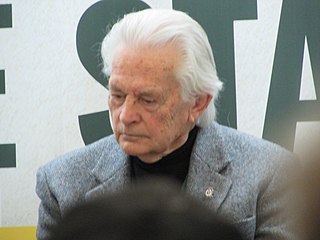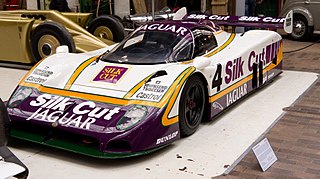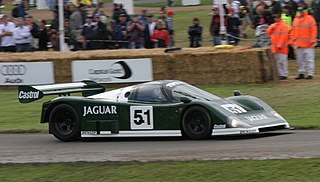| Years | Series / Race | Associate Manufacturer | Cars | | Driver(s) | Results |
|---|
| 1980 - 1981 | British Touring Car Championship, European Touring Car Championship | Mazda | RX-7 | | Win Percy, Pierre Dieudonné, Tom Walkinshaw, Chuck Nicholson | BTCC Championship winner (Percy), 1980 and 1981, ETCC winner 1981 [7] |
| 1982 | Paris-Dakar | Rover | Range Rover | | Rene Metge, Bernard Giroux | Overall Winner (Metge, Giroux) |
| 1981-1987 | British Touring Car Championship | Rover | Vitesse | | Andy Rouse, Peter Lovett, Jeff Allam, Neil McGrath, Pete Hall, Dennis Leech, Graham Scarborough, Tim Harvey | Championship winner, 1983 (later DQ on technicality); Championship winner (Rouse), 1984 [7] |
| 1982-1984 | European Touring Car Championship | Jaguar | XJ-S | | Tom Walkinshaw, Hans Heyer, Win Percy, Jean-Louis Schlesser, Enzo Calderari, Chuck Nicholson, Armin Hahne, Martin Brundle | 2nd in 1983, Championship winner (Walkinshaw), 1984. Spa 24 Hours winner (Walkinshaw, Percy, Heyer) 1984 [8] |
| 1984 | James Hardie 1000 | Rover | Vitesse | | Jeff Allam, Armin Hahne, Steve Soper, Ron Dickson | 1st in class (Allam, Hahne) [8] |
| 1985 | James Hardie 1000 | Jaguar | XJ-S | | Tom Walkinshaw, Win Percy, Jeff Allam, Ron Dickson, John Goss, Armin Hahne | Winner (Goss, Hahne), third place (Walkinshaw, Percy) and DNF |
| 1985 | French Saloon Car Championship | Rover | Vitesse | | Jean-Louis Schlesser | Championship Winner 1985 |
| 1985-1986 | European Touring Car Championship | Rover | Vitesse | | Tom Walkinshaw, Win Percy, Jean-Louis Schlesser, Eddy Joosen, Pierre-Alain Thibaut, Steve Soper, Hans Heyer, Martin Brundle, Gianfranco Brancatelli, Denny Hulme, Neville Crichton, Dave McMillan | 3rd in 1985 (Walkinshaw, Percy). 2nd in 1986 (Percy) [8] |
| 1985 | World Endurance Championship | Jaguar | XJR-6 | | Martin Brundle, Hans Meyer, Mike Thackwell, Jean-Louis Schlesser | 7th in Teams Championship [9] |
| 1986 | World Sports Prototype Championship | Jaguar | XJR-6 | | Derek Warwick, Eddie Cheever, Jean-Louis Schlesser, Gianfranco Brancatelli, Brian Redman, Armin Hahne, Hans Heyer, Jan Lammers | 3rd in Teams Championship; DNF at Le Mans [10] |
| 1987 | World Sports Prototype Championship | Jaguar | XJR-8 | | Martin Brundle, John Watson, Jan Lammers, Eddie Cheever, Raul Boessel, Armin Hahne, John Nielsen, Win Percy, Johnny Dumfries | Drivers Championship winner (Boessel); also top 4 drivers (Raul Boessel, Jan Lammers, John Watson, Eddie Cheever); Teams Championship winner; 5th at Le Mans [11] |
| 1988 | World Sports Prototype Championship | Jaguar | XJR-9 | | Martin Brundle, John Nielsen, John Watson, Andy Wallace, Jan Lammers, Johnny Dumfries, Eddie Cheever, Raul Boesel, Henri Pescalaro, Danny Sullivan, Price Cobb, Derek Daly, Kevin Cogan, Larry Perkins | Drivers Championship winner (Brundle); Teams Championship winner; Winner: 24-hours Le Mans (Lammers, Wallace, Dumfries) [12] |
| 1988 | IMSA | Jaguar | XJR-9 | | Eddie Cheever, Johnny Dumfries, John Watson, Martin Brundle, Raul Boesel, John Nielsen, Jan Lammers, Davy Jones, Danny Sullivan, | 2nd in Driver's championship (Nielsen); 3rd in Manufacturer's Championship Winner: 24-hours Daytona (Brundle, Boesel, Nielsen) [13] |
| 1988 | European Touring Car Championship | Holden | Commodore | | Tom Walkinshaw, Jeff Alam | 15th at RAC Tourist Trophy [8] |
| 1989 | World Sports Prototype Championship | Jaguar | XJR-11 / 9 | | Jan Lammers, Patrick Tambay, Andy Wallace, Alain Ferte, John Nielsen, Davy Jones, Price Cobb, Andrew Gilbert-Scott, Derek Daly, Jeff Kline, Michel Ferte, Eliseo Salazar | NOTE: transition year from V12 to V6 turbo 8th in Drivers championship (Tambay); 4th in Teams Championship [14] |
| 1989 | IMSA | Jaguar | XJR-10 / 9 | | Derek Daly, Martin Donnelly, Patrick Tambay, Jan Lammers, Davy Jones, Raul Boesel, Price Cobb, John Nielsen, Andy Wallace | NOTE: transition year from V12 to V6 turbo 3rd (Cobb) and 4th (Nielsen) in Driver's Championship. 2nd in Manufacturer's Championship [15] |
| 1990 | World Sports Prototype Championship | Jaguar | XJR-11 / 12 | | Martin Brundle, Alain Ferte, Jan Lammers, Andy Wallace, David Leslie, Franz Konrad, John Nielsen, Price Cobb, Eliseo Salazar, Davy Jones, Michel Ferte, Luis Pérez-Sala | NOTE: XJR-12 used for early part of season and Le Mans Winner: 24-hours Le Mans (Brundle, Nielsen, Cobb) in XJR-12; 2nd in Teams Championship; 4th in Drivers Championship (Wallace) [16] |
| 1990 | IMSA | Jaguar | XJR-10 / 16 | | Martin Brundle, Price Cobb, John Nielsen, Davy Jones, Jan Lammers, Andy Wallace, Alain Ferte | 2nd in Manufacturer's championship; 3rd (Jones) and 5th (Nielsen) in Driver's Championship; Winner: 24-hours Daytona (Brundle, Boesel, Nielsen) [17] |
| 1991 | World Sportscar Championship | Jaguar | XJR-14 / 12 | | Derek Warwick, Martin Brundle, Teo Farbi, John Nielsen, Bob Wollek, Kenny Acheson, Davy Jones, Raul Boesel, Michel Ferte, David Leslie, Mauro Martini, Jeff Krosnoff | NOTE: XJR-12 used solely for Le Mans Winner: Teams Championship; Winner, Drivers Championship (Farbe); 2nd, 3rd, 4th at Le Mans 24 hours [18] |
| 1991 | IMSA | Jaguar | XJR-10 / 12 / 16 | | Martin Brundle, John Nielsen, Eddie Cheever, Kenny Acheson, Davy Jones, Scott Pruett, Derek Warwick, Raul Boesel | NOTE: XJR-12 used solely for 24 hours Daytona 2nd in 24 hours Daytona; 3rd in Driver's Championship (Jones); 2nd in Manufacturer's Championship [19] |
| 1991 | Jaguar Intercontinental Challenge | Jaguar | XJR-15 | | Derek Warwick, David Brabham, Davy Jones, Juan Manuel Fangio, Armin Hahne, Bob Wollek, Tiff Needell, Jim Richards, Matsuaki Sanada, Cor Euser, David Leslie, Andy Evans, Yojiro Terada, Ian Flux, Matt Aitken, John Watson | Jaguar Intercontinental Challenge (1 make series): Winner, Armin Hahne [20] |
| 1992 | IMSA | Jaguar | XJR-12 / 14 | | Davy Jones, David Brabham, Scott Pruett, Scott Goodyear | NOTE: XJR-12 used solely for 24 hours Daytona 2nd in 24 hours Daytona; 2nd in Driver's Championship (Jones); 3rd in Manufacturer's Championship [21] |
| 1992 | World Sportscar Championship | Mazda | XJR-14 (rebadged MXR-01) | | Maurizio Sandro Sala, Johnny Herbert, Alex Caffi, Volker Weidler | 3rd in Teams Championship; 4th in Le Mans 24 hours, 8th in Drivers Championship (Sala) [22] |
| 1993 | IMSA | Jaguar | XJR-12 | | Davy Jones, David Brabham, Scott Pruett, Scott Goodyear, John Nielsen, John Adretti | ENTRY IN 24 HOURS DAYTONA ONLY Result: 10th [23] |
| 1993 | Le Mans | Jaguar | XJ220C | | David Brabham, Andreas Fuchs, Armin Hahne, Jay Cochrane, Win Percy, David Leslie, John Nielsen, Paul Belmondo, David Coulthard | Winner, GT Class (Nielsen, Coulthard, Brabham). Subsequently, disqualified due to procedural error relating to catalytic converters [24] |
| 1996 | Le Mans | Porsche (Joest Racing) | WSC-95 (re-bodied XJR-14) | | Davy Jones, Alex Wurz, Manuel Reuter | Winner [22] |
| 1997 | Le Mans | Porsche (Joest Racing) | WSC-95 (re-bodied XJR-14) | | Michele Alboreto, Stefan Johansson, Tom Kristensen | Winner [22] |
| 1997 | Le Mans | Nissan | R390 (re-styled XJR-15) | | Kazuyoshi Hoshino, Érik Comas, Masahiko Kageyama | 12th [22] |
| 1998 | Le Mans | Nissan | R390 (re-styled XJR-15) | | Aguri Suzuki, Kazuyoshi Hoshino, Masahiko Kageyama, John Nielsen, Michale Krumm, Franck Lagorce, Jan Lammers, Erik Comas, Andreas Montermini, Satoshi Motoyama, Takuya Kurosawa, Masami Kageyama | 3rd, 5th, 6th, 10th [22] |

